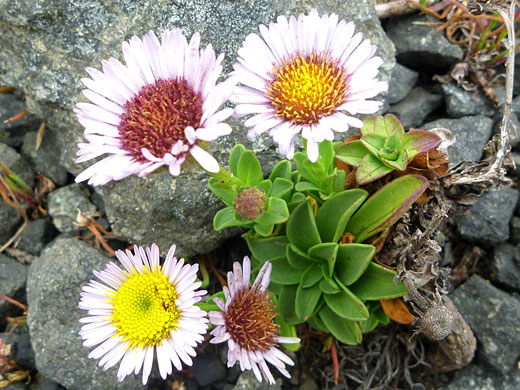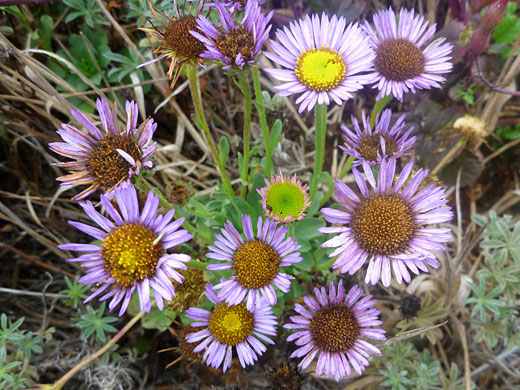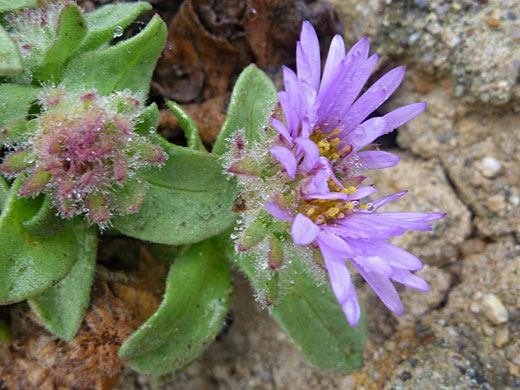Common names:
Seaside aster, seaside daisy, beach aster
Family:
Scientific name:
Erigeron glaucus
Main flower color:
Range:
Coastal areas of Oregon and California
Height:
Up to 12 inches
Habitat:
Beach margins, bluffs, dunes - usually no higher than 100 feet above sea level
Leaves:
Obovate, up to 5 inches long; thick, with a fine hair covering, often with a few broad teeth along the edge
Season:
February to June
The pale pink (less often purple, pale blue or off-white) disc florets of erigeron glaucus usually number between 80 and 165 and are about half an inch long, radiating around a wide center of several hundred yellow ray florets, which elongate slightly as they mature. Phyllaries are in 3 or 4 rows, green often with reddish tips, and they are usually recurved.
Plants grow mostly sideways, close to the ground, often partially covered by sand. Flowers bloom profusely in spring, and the plant is common along the Pacific coastline of Oregon and California, inhabiting sand dunes and nearby bluffs. The evergreen leaves are thick, succulent-like, and form a dense mat below the flowers. Leaves, stems and phyllaries are all hairy.
Plants grow mostly sideways, close to the ground, often partially covered by sand. Flowers bloom profusely in spring, and the plant is common along the Pacific coastline of Oregon and California, inhabiting sand dunes and nearby bluffs. The evergreen leaves are thick, succulent-like, and form a dense mat below the flowers. Leaves, stems and phyllaries are all hairy.
All Contents © Copyright The American Southwest | Comments and Questions | Contribute | Site Map






